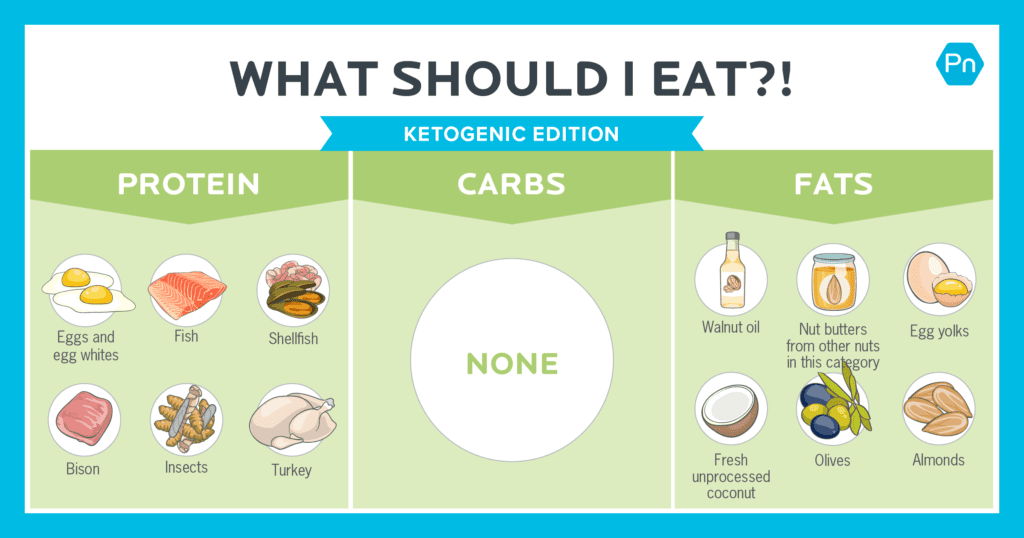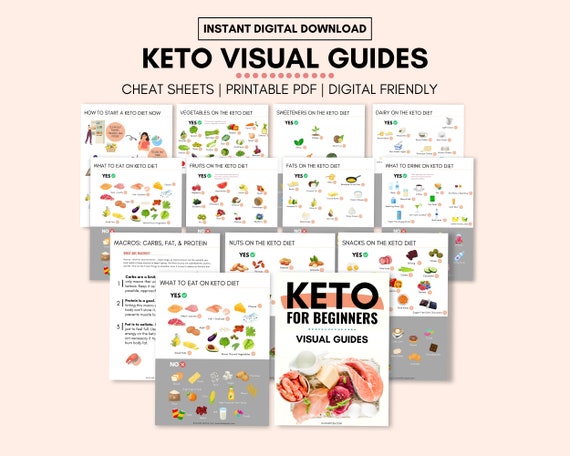Curious about starting a keto diet? Unlock the secrets to the ultimate beginner’s food list for success and satisfaction.

Image courtesy of via DALL-E 3
Table of Contents
Introduction to the Keto Diet
Are you curious about the keto diet and why so many people are talking about it? Let’s dive into the basics of what the keto diet is and why it has become such a popular choice for many looking to improve their health and lifestyle.
What is Keto?
The ketogenic diet, commonly known as the keto diet, is a way of eating that focuses on consuming high amounts of healthy fats and minimal carbohydrates. By cutting down on carbs and increasing fat intake, your body enters a state called ketosis, where it burns fat for energy instead of relying on carbs. This can lead to weight loss and improved energy levels for many people who follow the keto diet.
Why Do People Choose Keto?
People are drawn to the keto diet for various reasons, with weight loss and increased energy being at the top of the list. By reducing carbs and sugar in their diet, many find that they can shed excess pounds and feel more energized throughout the day. Some also turn to keto for its potential benefits in managing conditions like diabetes or improving focus and mental clarity.
Keto Diet Food Fundamentals
Following a keto diet means eating foods that are low in carbs and high in fats. This way of eating can help your body burn fat for fuel instead of carbs. Let’s explore what foods you can enjoy on a keto diet and the ones you should avoid.
Foods to Enjoy
On a keto diet, you can enjoy delicious foods like:
- Meats such as beef, chicken, and bacon
- Fatty fish like salmon and mackerel
- Eggs, which are a versatile and nutritious option
- Certain low-carb veggies like spinach, broccoli, and cauliflower
- Healthy fats such as avocado, olive oil, and coconut oil
These foods will keep you feeling full and satisfied while keeping your carb intake low.
Foods to Avoid
While on a keto diet, it’s important to avoid foods that are high in carbs. Some foods to stay away from include:
- Bread and other baked goods
- Pasta, rice, and grains
- Sugary snacks like cookies, candy, and soda
- Fruits that are high in sugar, such as bananas and grapes
- Sauces and condiments with added sugars
By skipping these high-carb foods, you’ll stay in ketosis, the state where your body burns fat for energy instead of carbs.
Crafting Your Keto Shopping List
As you embark on your keto journey, it’s crucial to have a well-thought-out shopping list to ensure you have the right ingredients on hand. Let’s dive into how you can create your very own keto shopping list as a beginner.

Image courtesy of www.precisionnutrition.com via Google Images
Basic Keto Grocery Items
When you’re just starting out on the keto diet, there are some essential items you should include on your shopping list. These items will serve as the foundation for your meals and snacks:
1. Healthy Fats: Stock up on healthy fats like avocado oil, olive oil, coconut oil, and grass-fed butter.
2. Proteins: Opt for grass-fed meats, pasture-raised poultry, wild-caught fish, and organic eggs to meet your protein needs.
3. Low-carb Veggies: Fill your cart with leafy greens, cruciferous vegetables (like broccoli and cauliflower), zucchini, and bell peppers for nutritious options.
4. Nuts and Seeds: Choose almonds, walnuts, chia seeds, and flaxseeds for healthy fats and fibre.
5. Dairy: If you tolerate dairy, select full-fat options like cheese, heavy cream, and Greek yogurt (with no added sugars).
6. Condiments and Spices: Don’t forget to add herbs, spices, and keto-friendly condiments like mustard, hot sauce, and sugar-free mayonnaise to your list.
Planning Your Meals
Planning your meals ahead of time can make your keto shopping trips more efficient and help you stay on track with your diet goals. Here’s how you can plan your meals effectively:
1. Meal Prep: Take some time each week to plan your meals and snacks. Preparing meals in advance can save you time and prevent impulsive food choices.
2. Batch Cooking: Consider batch cooking staple items like grilled chicken, roasted veggies, and hard-boiled eggs to have ready-to-eat options throughout the week.
3. Recipes: Look for keto-friendly recipes online or in cookbooks to inspire your meal planning and add variety to your diet.
By incorporating these basic keto grocery items and planning your meals ahead of time, you can set yourself up for success on the ketogenic diet.
Getting Started with Keto
So you’ve heard about the keto diet and want to give it a try? Great! Here’s a simple approach to starting your keto journey:
Day 1: Clean out your pantry and fridge of any high-carb foods like bread, pasta, rice, and sugary snacks. Stock up on keto-friendly foods like meats, fish, eggs, cheeses, nuts, seeds, avocado, and low-carb vegetables.
Day 2: Plan your meals for the week ahead. Think about easy-to-prep, high-fat, low-carb dishes like salads with grilled chicken, omelets with veggies and cheese, and baked salmon with butter sauce.
Day 3: Start your day with a keto-friendly breakfast, like bacon and eggs or a smoothie made with coconut milk and berries. Remember to stay hydrated by drinking plenty of water throughout the day.
Day 4: Listen to your body. Pay attention to how you feel after eating keto meals. Are you satisfied? Do you have enough energy? Adjust your meal planning based on how your body responds.
Day 5: Monitor your progress. Keep track of any changes in your weight, energy levels, and overall well-being. Remember, everyone’s body is different, so be patient with yourself.
Keeping Track of Your Progress
As you begin your keto journey, it’s essential to monitor your body’s changes and progress along the way. Here are some tips to help you keep track:
1. Record your meals and snacks in a food journal to see what works best for you.
2. Measure your weight and body measurements regularly to track any changes over time.
3. Pay attention to how you feel physically and mentally. Do you have more energy? Are you less bloated?
4. Consult with a healthcare provider or nutritionist to ensure you’re meeting your nutritional needs while on the keto diet.
Common Mistakes and How to Avoid Them
When starting out on the keto diet, it’s easy to make some common slip-ups that can hinder your progress. One mistake is not tracking your carbohydrate intake meticulously. Since the keto diet is all about low carbs, it’s essential to keep a close eye on the amount of carbs you consume. Another common slip-up is not getting enough healthy fats. Remember, fats should make up the majority of your daily calorie intake on keto. Lastly, some beginners forget to stay hydrated. Drinking plenty of water is crucial on the keto diet to stay properly hydrated and support your body’s functions.

Image courtesy of www.etsy.com · In stock via Google Images
Staying on Track
To avoid these slip-ups and stay on track with your keto diet, it’s important to plan ahead. Meal prepping can help you have keto-friendly meals ready to go, so you’re not tempted to reach for non-keto snacks. Additionally, keep yourself motivated by setting realistic goals and celebrating your achievements along the way. Surround yourself with a support system of friends or family who understand your keto journey and can cheer you on. By staying consistent with your eating habits and lifestyle choices, you can avoid common mistakes and find success with the keto diet.
| Food Category | Food Item |
|---|---|
| Proteins | Chicken Breast |
| Salmon | |
| Eggs | |
| Fats | Avocado |
| Olive Oil | |
| Butter | |
| Vegetables | Spinach |
| Broccoli | |
| Cauliflower | |
| Dairy | Heavy Cream |
| Cheese | |
| Greek Yogurt |
Summing Up the Keto Starter Info
After learning about what the keto diet is and why people choose to follow it, it’s important to understand the basics of the foods you should focus on and those you should avoid.
What is Keto?
The keto diet is all about eating high-fat, low-carb foods to help your body burn fat for fuel instead of carbs. It’s a popular choice for many looking to lose weight and boost energy levels.
Why Do People Choose Keto?
People opt for the keto diet for its weight loss benefits and the increased energy it can provide. By restricting carbs and focusing on fats, many find success with this approach.
Foods to Enjoy
On the keto diet, you can enjoy foods like meats, fish, eggs, cheese, nuts, and low-carb vegetables such as spinach and broccoli.
Foods to Avoid
Avoid foods high in carbs and sugar like bread, pasta, rice, sugary snacks, and most fruits, as they can prevent your body from entering ketosis.
Crafting Your Keto Shopping List
When creating your keto shopping list, be sure to include plenty of meats, vegetables, dairy, and healthy fats like avocados and olive oil. Planning your meals ahead can also help you stay on track.
Getting Started with Keto
If you’re new to the keto diet, take it step by step and track your progress along the way. Starting slowly can help you adjust to this new way of eating.
Common Mistakes and How to Avoid Them
To stay on track with keto, be mindful of common slip-ups like not eating enough fat or protein, or giving in to carb cravings. By planning ahead and having a support system in place, you can avoid these pitfalls.
By understanding the fundamentals of the keto diet, you’ll be better equipped to start your journey towards a healthier lifestyle. Remember, it’s all about balance and making choices that support your goals.
Frequently Asked Questions (FAQs)
Can kids do the keto diet?
The keto diet is generally not recommended for children unless specifically advised by a healthcare professional. Kids have different nutritional needs than adults, and restricting certain food groups, as the keto diet requires, can impact their growth and development. It’s crucial for children to have a well-balanced diet that provides all the necessary nutrients for their bodies to thrive.
How long does it take to see results on keto?
The timeline for seeing results on the keto diet can vary from person to person. Some individuals may notice changes within a few weeks, such as weight loss or increased energy levels, while others may take longer. It’s essential to be patient and consistent with the keto diet to allow your body to adapt to using fats as its primary source of energy. Remember, everyone’s body is different, so results may not be immediate for everyone.




